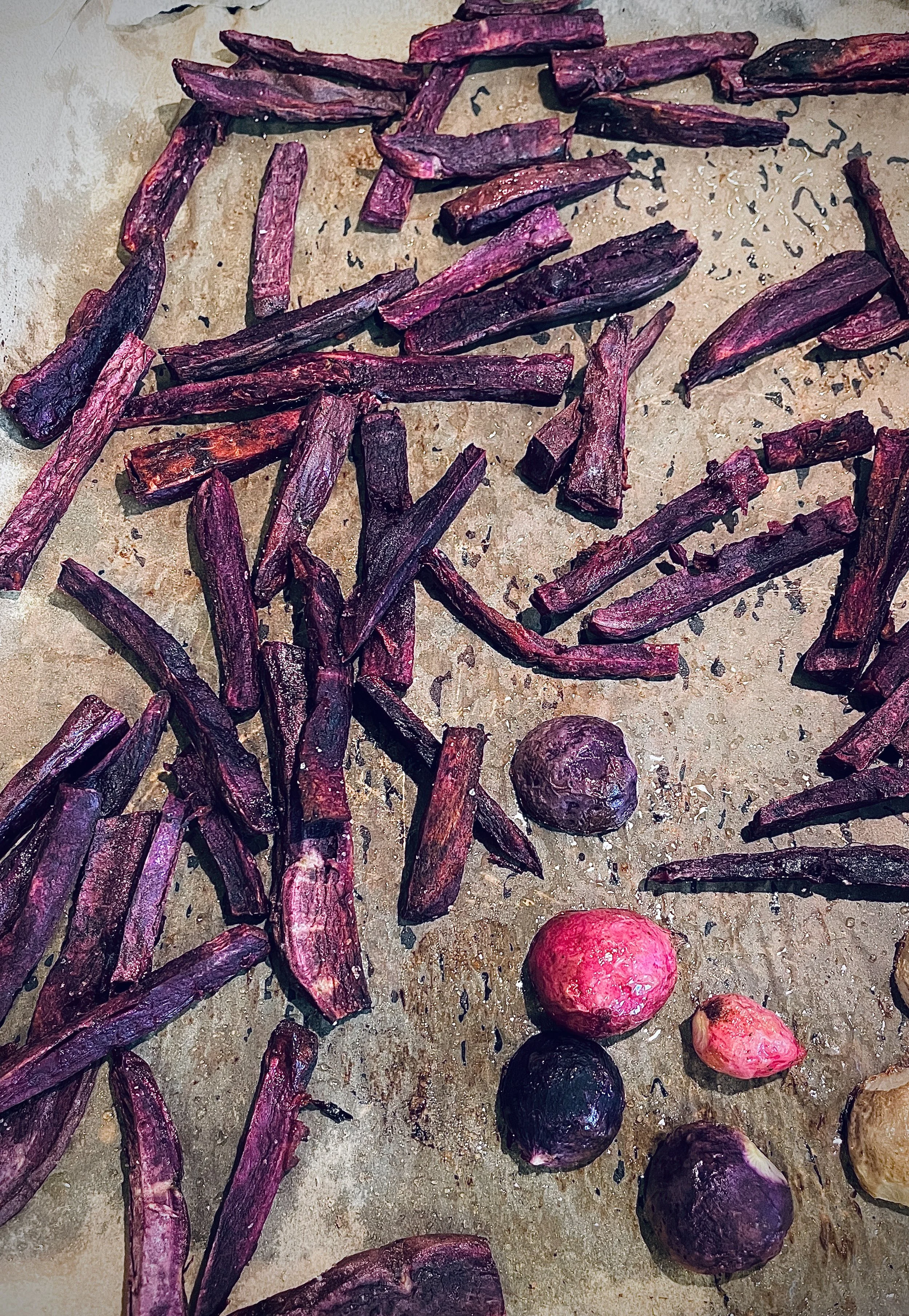Why "Eat the Rainbow" is a great mantra...for all ages!
Purple Sweet Potatoes have the perfect texture for sweet & crunchy sweet potato “fries”
I work with kids and adults alike—the age range is really quite amazing! One thing I find myself saying a lot is “eat the rainbow”. Sometimes I get a confused look in response (from both younger and older clients).
Why do I tell people this?
All the different colors in our fruits, vegetables, whole grains & spices contain unique phytonutrients that benefit our health. While each individual food’s color can provide those certain benefits, when paired with other colors, the effects on your health are astonishing. That's why it's important to eat a wide variety of colors. (Read more from the Mayo Clinic’s research…)
The benefits of the rainbow and how to get those different colors:
Red fruits and vegetables—> contain lycopene
Improves heart health, decreases prostate and breast cancer risk, contributes to stroke prevention and increases brain function
Good sources of lycopene include tomatoes, beets, radish, cherries, strawberries, red onions and red peppers
Orange and yellow fruits and vegetables—> contain carotenoids
Reduce the risk of heart disease and inflammation, strengthen the immune system, build healthy skin and improve vision
Good sources of carotenoids include carrots, winter squash, apricots, yellow peppers, sweet potatoes, bananas, pineapple, mangoes, pumpkins, peaches and oranges
Green fruits and vegetables—> contain indoles and isothiocyanates
These foods are high in vitamin K, potassium, fiber and antioxidants
May help prevent cancer
They also contain folic acid, which helps prevent neural tube defects in babies
Good sources include spinach, arugula, broccoli, Brussels sprouts, avocadoes, kiwis, green tea, asparagus, fresh green herbs, kale and artichokes
Blue and purple fruits and vegetables—> contain anthocyanins and antioxidants
Associated with improved brain health and memory
They also help lower blood pressure and reduce the risk of stroke and heart disease
Good sources include blueberries, blackberries, eggplant, figs, purple cabbage, concord grapes and plums
White and brown fruits and vegetables—> contain flavonoids and allicin
Have anti-tumor properties
Can reduce cholesterol and blood pressure
Improve bone strength and decrease risk of stomach cancer
Good sources include onions, mushrooms, cauliflower, garlic and leeks
Main Takeaway: Eat the Rainbow & Mix it Up!
The different colors in your fruits, vegetables, whole grains & spices contain different phytonutrients (plant compounds) that offer unique health benefits, so the more colorful your plate—you’ll benefit from a broader range of these protective and nourishing compounds.
